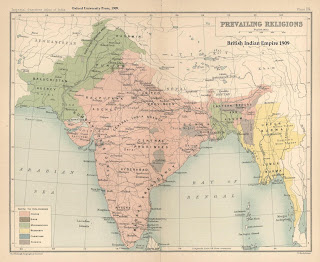On 12 th May, it was evident that no solution was possible and the Mission announced the failure of the conference.
On 16th May, the Cabinet Mission announced its three-tier scheme for forming a Union of All India consisting of Hindu majority provinces, Muslim majority provinces, and the Indian States. On 25 June,the Congress Working Committee passed a resolution to accept the Cabinet Mission's plan and to enter the Constituency Assembly. On 29th June, the Cabinet Mission left India with only the implicit successof having placing Congress and Muslim league in a position of having to force their way through to resolution.
On 16 June, after unsuccessful bargaining, Lord Wavell, unilaterally named the fourteen members of the Executive Council. they included : six from Congress, including one from Scheduled Caste, five Muslim league members, one Sikh,one Indian Christian and one Parsee. If either of the major parties refused to join the Council, the Viceroy announced his intention to proceed with an Interim Govt. On June 25, the Congress accepted the plan, but essentially nullified it with reservations. The Muslim accepted Wavell's plan.
On 29 June, the Muslim League withdraw its acceptance of both the may 16 and June 16 agreements, due to their perception of Congress party obstinacy and the breach of faith by the British Govt.
On 8th Aug, the Congress Working Committee accepted the invitation to form a Govt. On Aug 29, its composition included six Hindus : Jawaharlal Nehru ( 1889-1964), Vallabhbhai patel (1875-1950), Rajendra Prasad (1884-1963), Sarat Chandra Bose (1889-1950), Chakravorti Rajagopalachari (1879-1972), and Jagjivan Ram (1908-1986); three Muslims: Aruna Asaf Ali (1909-1996), Sir Sharfaat Ahmed Khan and Said Ali Zaheer; One Sikh: Sarder Baldev Singh,; one Parsi; C.H.Bhabha; oe Indian Christian: John Mattal and two empty sits for Muslims.
Jinnah named the day 16th Aug, 1946, a "Direct Action Day", which passed off reasonably quietly throughout most of India except for Calcutta. here, H.S. Suhrawardy (1893-1963), head of the Bengal Ministry , declared a Pblic holiday. In Consequence, an Idle city exploded in communal violence, resulting in 20,000 dead or injured over the following three days.The British began to restore a peace only when several British and Indian Army Battalions entered the city on the evening of Aug 16.The great calcutta killing set in motion communal violence and killing over much of India for the next several monthsas India moved towards Independence.
On 2nd Sep, lord Wavell, announced the Cabinetfor the Interim Govt. it included Jawaharlal Nehru as Prime Minister, others as ministers.



















































